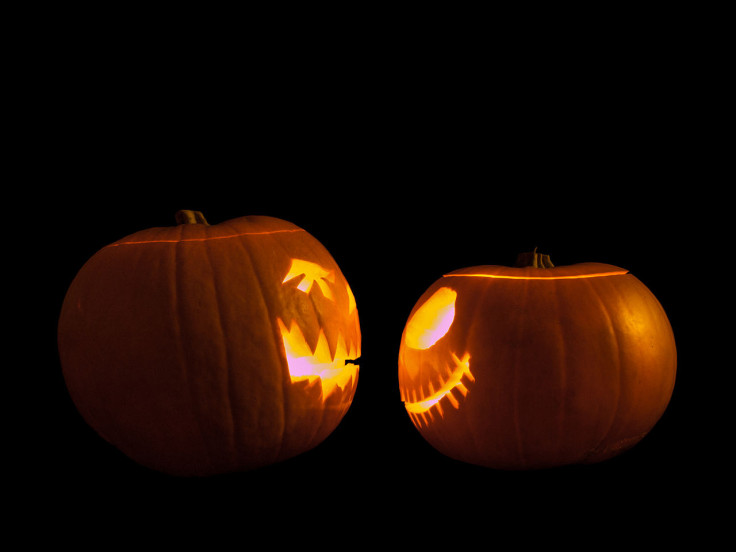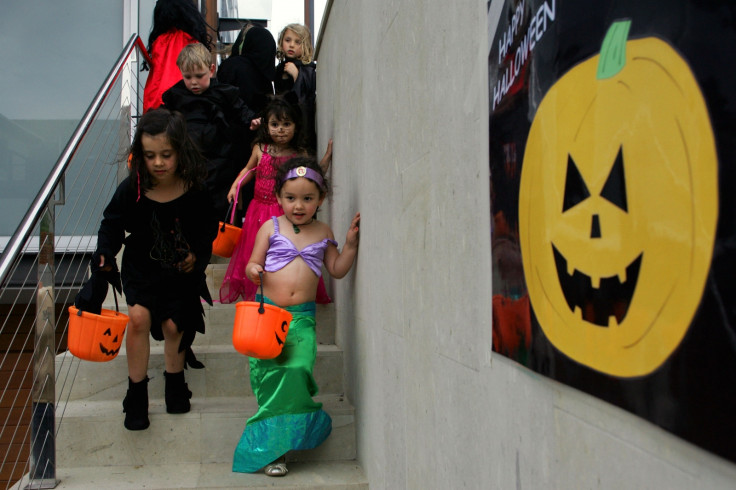Halloween 2014: The Origins of This Ancient Christian and Pagan Festival
Take a look at the origins of everyone's favourite spooky festival

It's Halloween again and grownups and children alike around the world will be excitedly dressing up in costumes, going to parties, trick-or-treating from door-to-door for candy and carving pumpkin lanterns.
But Halloween wasn't always all just about making merry and trying to create the prettiest, scariest or the most shocking costume – its roots are both Christian and Pagan.
Join us as we take a look back at the origins behind the jack-o'-lanterns, the ghosts and the ghouls behind All Hallows' Eve.
Roots of the name

There are many theories as to how Halloween came about, but according to Nicholas Rogers, author of Halloween: From Pagan Ritual to Party Night, Halloween is influenced by even more ancient festivals right back to the time of the Romans, similar to the evolvement of Christmas.
It is believed that Halloween has been influenced by both the ancient Roman festival known as Parentalia (which means "ancestral days"), a nine-day-long festival held to honour family ancestors that began on 13 February, as well as the Roman feast of the Pomona, goddess of fruits and seeds.
Of course, since these festivals were celebrated in the British Isles, Halloween eventually also became influenced by Samhain (which means "summer's end" in Old Irish), a Celtic festival celebrated in Scotland, Ireland and the Isle of Man around 31 October to 1 November.
At the same time, Brittonic Celts were also holding similar festivals known as Calan Gaeaf (and other variations of the name), and both Calan Gaeaf and Samhain were used to refer to Celtic Halloween customs right up until the 19<sup>th century.
In Old English, the phrase "All Hallows" meant "all saints mass-day", and it is believed that the Scottish phrase "All Hallows' Eve" (which dates back to 1556) eventually morphed into the term Halloween around 1745.
Why do we carve pumpkins?
According to Rogers' research, in medieval Britain, supplicants would walk from door-to-door asking for food in return for a prayer for the dead.
These people would carry hollowed-out turnip lanterns, and the candle was meant to represent a soul trapped in purgatory.

And later on, once Halloween arrived in America with the Scottish and Irish immigrants, people stopped using hollowing out turnips and began using pumpkins instead.
Pumpkins were plentiful and were naturally hollow in the middle, and they were much easier to carve.
There is also the traditional Irish folktale about "Stingy Jack". Stingy Jack is believed to have been a man who invited the Devil to have a drink with him, but because he was essentially quite cheap, he decided to trick the Devil into turning into a coin so that Jack could then use it to buy their drinks.
However, when the Devil did as he asked, Jack decided to keep the coin instead, putting it into his pocket next to a silver cross, which protected him and prevented the Devil from turning back into its true form.
Eventually, Jack tired of the coin and freed the Devil, but made him promise not to bother him for one year, and if Jack were to die, the Devil had to promise not to claim his soul.

But that wasn't enough for Jack. A year later, when the Devil appeared, this time Jack tricked him into climbing up a tree to pick a piece of fruit.
While the Devil was up in the tree, Jack then carved a cross into the tree trunk to trap the devil, and would not remove it until the Devil promised not to bother Jack for another 10 years.
One day, Jack did die, but God did not want him in heaven, and the Devil, who was still upset about the tricks Jack had played on him and unable to claim his soul due to his promise, refused to let him into Hell.
So instead Jack was sent off into the night with only a burning coal to light his way. The legend says that Jack put the burning coal into a hollowed-out turnip and has been roaming the world as a spirit ever since.
The Irish began to call his ghostly figure "Jack of the Lantern", which became shortened over time to "Jack O' Lantern".
What about ghosts and dressing up?

The Celtic festival of Samhain, similar to other festivals around the world devoted to the dead, like the Mexican Day of the Dead and the Chinese Hungry Ghost Festival, all point to the same belief – that during the specified festival, the dead could walk amongst the living on Earth.
The Celts would wear ghoulish costumes in the hope that if they looked like a spirit, than other wandering spirits would leave them alone. Some people also believed that if they offered sweets to the spirits, they would be appeased.

Many cultures have similar ways of dealing with this belief.
The Mexicans, for example, who are predominantly Catholic, spend three days paying homage to their dead relatives by eating special foods, making altars to the their departed and keeping vigils at the cemetery.
The Mexicans also pray for their dead and attend the Catholic feast known as All Souls Day.
The Chinese, on the other hand, burn offerings to their relatives during the one month festival in July, from paper money to paper cars and houses, and leave food offerings, in the hope that the spirits of the dead will leave them in peace.
Similarly, Jack O' Lanterns might originally also have been used to ward off spirits by being placed on the door stoop of each dwelling, and over time, this evolved to become decorations, while children now take the place of ghouls and come to beg sweets, threatening to play a nasty trick if they don't receive candy.
© Copyright IBTimes 2024. All rights reserved.






